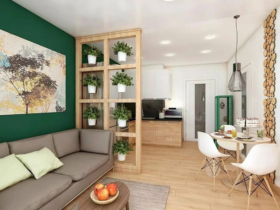Plasterboard structures are mounted on the ceiling in the first place in order to level the surface of the ceiling. Despite the serious differences in the height of the ceiling, the drywall sheets are able to level the surface of the ceiling. Of course, there are a number of ceiling shortcomings. The main disadvantages of drywall ceilings are the loss of the height of a certain room, as well as the exposure of drywall sheets on the ceiling with various deformations, as well as a color change.
The first step in the installation of the drywall ceiling is the work of the ceiling measurement, after which the surface of the ceiling is marking. Using the hydraulic level, the ceiling is marking. Using the upholstery cord, a mark of the marked level around the entire perimeter of the ceiling is made. The best option will be the use of a guide profile. After marking the surface of the ceiling, a thorough marking of places for mounting suspensions is carried out on which the profile will be fixed. When choosing suspensions, it is necessary to pay attention to certain requirements for a suspended ceiling.
In order to maintain the height of the ceilings of the room, a regular straight suspension is used. In the event that the suspended ceiling is mounted in a room that has basic high ceilings and the loss of a certain height of the ceilings will not be significant, traction is used with a suspension. After installing suspensions and profiles using a screwdriver and screws, drywall sheets are attached to the profile. After that, drywall is aligned with putty.






